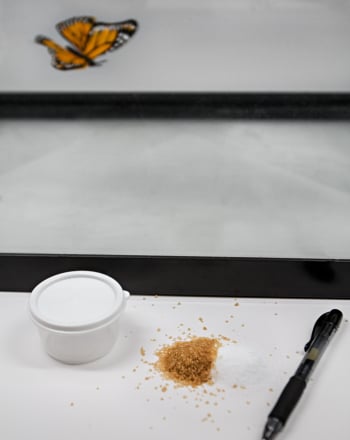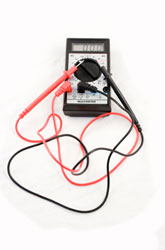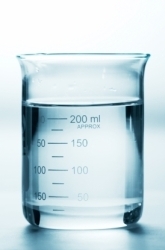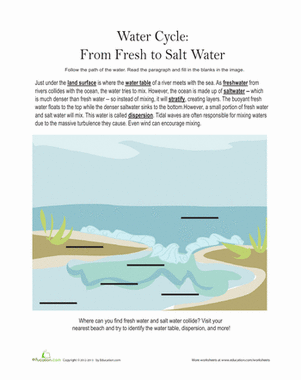Science project
Which Addition to Hard Water would Reduce its Conductivity, Washing Soda or Rain Water?
Type
Grade Level
Middle School (grades 6 -8)
Difficulty of Project
Easy
Cost (Approximate Cost)
Safety Issues
Hard water is not a health hazard, but handling hard water over a prolonged period of time can produce dry skin also, hard water will aggravate or inflame any conditions already present with the skin including psoriasis, or any type of rash or hives. The investigator should wear disposable plastic or rubber gloves when handling the hard water and the washing soda.
The investigator should not ingest the substances used or drink the liquids associated with this activity. The supervising adult should discuss the warnings and safety information with the child or children before commencing the activity.
Material Availability
The materials required for this project are readily available.
Approximate Time Required to Complete the Project
Two hours after rain water has been collected.
Objective
Hard water refers to the presence of dissolved ions, mainly of calcium Ca2+ and magnesium Mg2+ which are acquired through contact with rocks such as limestone and dolomite which contain calcium and magnesium. The research aspect of this science fair project is to use a conductivity device to determine which actions will reduce the ionic concentration of hard water better, the addition of washing soda or rain water.
This science fair project focuses on the use a conductivity device that will enable the investigator to determine the ionic concentrations of hard water before and after it has been treated chemically and by a physical process. The investigator will first measure the conductivity of a test sample of hard water, than this sample will be equally divided and placed in two containers. Washing soda will be added to one cup and the other will be allowed to collect rain water. After a pre-set time the conductivity of the samples will be measured and recorded in a data table, from which a graph displaying the result will be plotted.
Materials and Equipment /Ingredients
A conductivity device, a package of clear plastic cups, plastic spoons, dish washing detergent, distilled water, hard water either from the kitchen faucet or a nearby stream flowing through an area with high limestone rock deposits.
With the exception of the conductivity device all of the materials can be purchased from the local supermarket or major retail (Wal-Mart, Target, Dollar General, etc) discount department store. The Tri-fold display board can be purchased from an art & craft store.
A conductivity device can be purchased from the following online venders: Science in A Bag “Conductivity Circuit Board Indicator” retails for about $16.00 and includes free shipping. ScienceKit Inc “Audio/Visual Conductivity Indicator” Catalog # WW45354M50 retails for about $42.00 and sometimes comes with free shipping and handling.
Introduction
Hard water refers to the presence of dissolved ions, mainly of calcium Ca2+ and magnesium Mg2+ which are acquired through contact with rocks such as limestone and dolomite which contain calcium and magnesium. Because of these and other metallic ions that are present in hard water it can conduct and electric current.
Solutions that contain this capability of conducting electricity are called electrolytes. Because the electrical current is transported by the ions in solution, the conductivity increases as the concentration of ions increases or decreases when the ionic concentration decreases. While hard water is not a health concern, excessive amounts of water hardness can cause lime or scale build-up in pipes and reduce the effectiveness of soaps and laundry detergents.
Washing soda (sodium carbonate) is used in homes for the purpose of softening hard water. When soaps or detergents are added to hard water, no lather is formed, which in turn affects the cleaning ability of the soap. This is because the calcium and magnesium ions present in hard water react with soaps and detergents and changes their properties and prevents formation of lather. When washing soda is added the calcium and magnesium ions in hard water react with the carbonate ions from the sodium carbonate and a precipitate of calcium carbonate results. This can be seen in the equation.
As can be seen in the chemical reaction equation ions are still present after the addition of washing soda therefore an electric current can still flow through the now “soft” water which will be detected when the conductivity is measured.
Compared to the hard water and water treated with washing soda, rainwater has lower conductivity. The addition of rain water to hard water will diluted the concentration of ions and thereby lowers the conductivity of the hard water.
Electrical conductivity can be measured using a conductivity measuring device consisting of two metal electrodes usually spaced 1 cm apart (thus the unit of measurement is microSeimens or milliSeimens per centimeter). A constant voltage is applied across the electrodes resulting in an electrical current flowing through the solution to be tested. Since the current flowing through the water is proportional to the concentration of dissolved ions in the water, the electrical conductivity can be measured. The higher the dissolved ion concentration, the more conductive the sample and hence the higher the conductivity reading.
Digital photos can be taken during the experimenting process and the following websites offer down loadable images that can be used on the display board:
- http://fondriest.com/fileshare/subpages/science_library/conductivity.jpg
- http://www.avonsoft.com/images/pipe.gif
- http://www.water-research.net/images/hardwatermap1.jpg
- http://stores.healthy-planet-fundraising.com/catalog/Washing_Soda_Stone_2.JPG
Research Questions
- What is hard water and how is it produced?
- What is conductivity?
- Does the addition of washing soda change hard water from conductor of electricity to a non conductor?
- Which has lower conductivity, hard water treated with washing soda or hard water treated with rainwater?
- If a hard water sample was taken from a natural body of water (lake, river, or stream) before it rained and after it has rained would there be a noticeable change in conductivity?
- What is the control for this investigation?
Terms, Concepts and Questions to Start Background Research
Hard water, soft water, electrical conductivity, electrolytes, calcium ion, magnesium ion, metal electrodes, Washing soda, sodium carbonate, and ions
Experimental Procedure 

- This project requires the use of hard water and should be conducted on a day where it is ether raining or it is forecast to rain.
- The young investigator can perform a simple unscientific test for hard water by opening the water faucet and filling up a bottle having a cap with about a half-cup of water; add ten drops of dish washing detergent and shake well. If a soapy suds solution foams up quickly the water is not hard.
- If suds do not foam up but instead a milk-curd-like or soapy film forms instead then the water is likely hard and can therefore be used in this project.
- If hard water is present place equal amounts of hard water into two cups, and the same amount of distilled water into a third cup.
- Straightened 6 paper clips and using tape fasten the clips to opposite sides of each of the three cups.
- Measure the conductivity of the distilled water and the hard water. Do not place the alligator clips directly into the water. This will result in the eventual corrosion of the clips. Instead, clamp the alligator clips to the paper clips that have already been placed in the waters as shown to the left.
- Depending of the conductivity device being used record whether or not the LED glows.
- Place a in the table that corresponds to the light produced by the LED. Based on the brightness of the LED classify the waters as “good,” “moderate,” “weak,” or “not a conductor”

|
Untreated Samples
|
LED Light Intensity & Conductivity Classification |
||||
|
|
Bright
|
Moderately Bright
|
Dim
|
No Light
|
Conductor
|
|
Distilled Water
|
|
|
|
|
|
|
Hard Water
|
|
|
|
|
|
- Collect rain water in a separate clean cup. Dilute one of the hard water samples with the rain water by half. Stir the mixture. Next add a small tablespoon of washing soda to the 2nd hard water sample and stir. Use separate spoons for each action. Nothing should be added to the cup with distilled water. This cup will serve as a control.
- Allow the samples to sit undisturbed for about halve an hour then measure the conductivity of the two samples following the same procedure as before. Record the results in the data table.
- Place a in the table that corresponds to the light produced by the LED. Based on the brightness of the LED classify the waters as “good,” “moderate,” “weak,” or “not a conductor”

|
Treated Samples
|
LED Light Intensity & Conductivity Classification |
||||
|
|
Bright
|
Moderately Bright
|
Dim
|
No Light
|
Conductor
|
|
Rain water Dilution |
|
|
|
|
|
|
Washing Soda Addition
|
|
|
|
|
|
- Using graph paper or a computer equipped with Excel® visually display the data in the table by plotting a bar graph similar to the one shown of the treated hard water vs. conductivity.

Bibliography
Title: Calcium and Magnesium in Drinking Water, Author and Publisher: World Health Organization, ISBN-13: 9789241563550 and ISBN: 9241563559
This book addresses the question can calcium and magnesium (“hardness”) in drinking water contributes to preventing disease. There is chapter that discusses how climate change will increase the use of high tech treatments for hard water. This book can be consulted the young investigator and his or her parents (teachers) for general information about calcium and magnesium the main constituents of hard water.
- Hardness Calcium Magnesium Water Corrosion Mineral Scale
- Hard Water
- Uses of Washing Soda (Sodium Carbonate)
Note: The Internet is dynamic; websites cited are subject to change without warning or notice!
Education.com provides the Science Fair Project Ideas for informational purposes only. Education.com does not make any guarantee or representation regarding the Science Fair Project Ideas and is not responsible or liable for any loss or damage, directly or indirectly, caused by your use of such information. By accessing the Science Fair Project Ideas, you waive and renounce any claims against Education.com that arise thereof. In addition, your access to Education.com's website and Science Fair Project Ideas is covered by Education.com's Privacy Policy and site Terms of Use, which include limitations on Education.com's liability.
Warning is hereby given that not all Project Ideas are appropriate for all individuals or in all circumstances. Implementation of any Science Project Idea should be undertaken only in appropriate settings and with appropriate parental or other supervision. Reading and following the safety precautions of all materials used in a project is the sole responsibility of each individual. For further information, consult your state's handbook of Science Safety.













